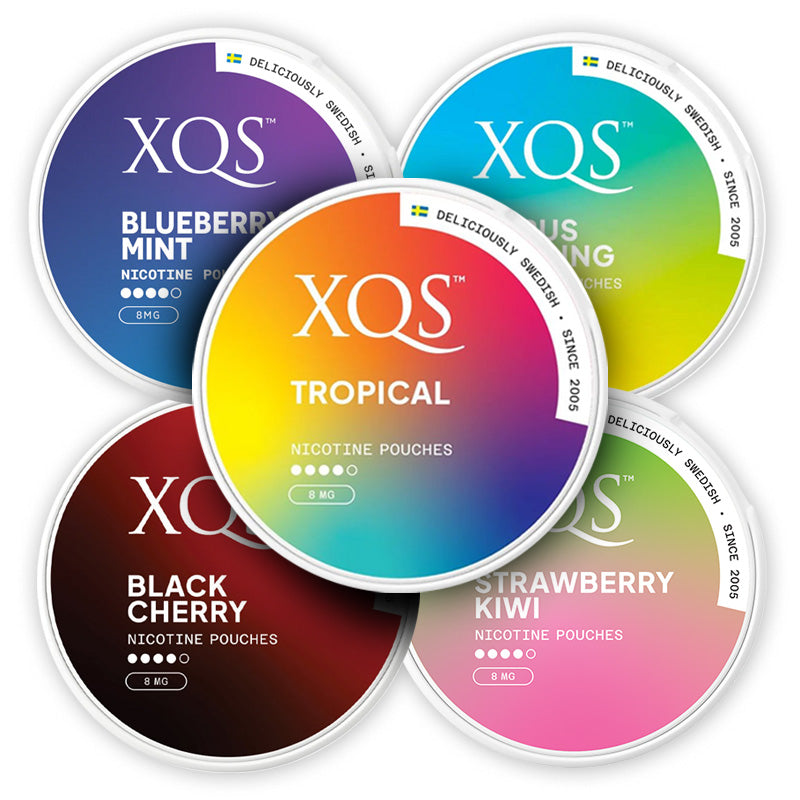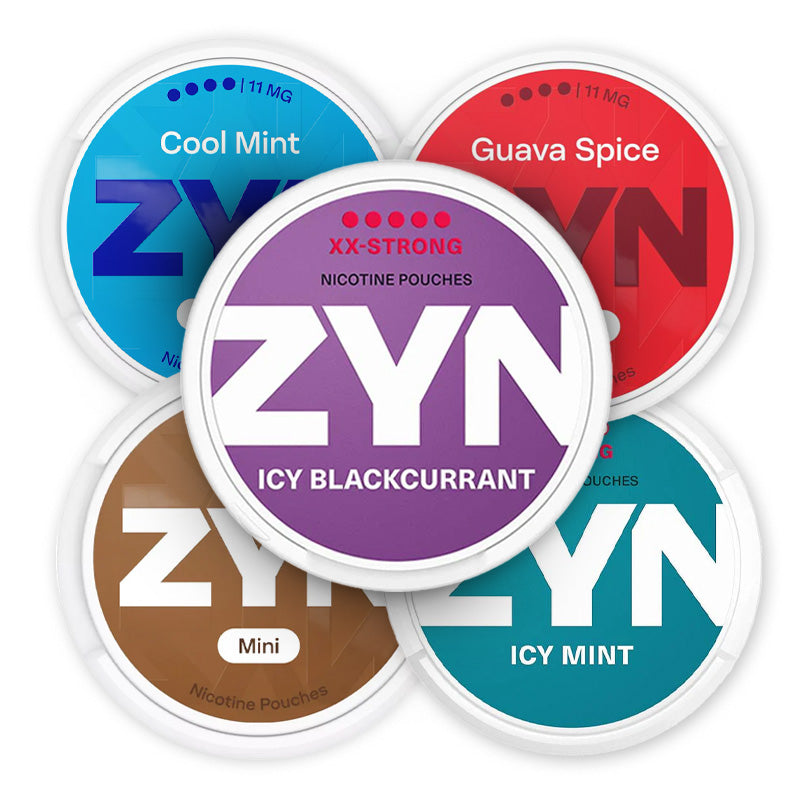
Nicotine Pouches Dodge Vape Tax
Nicotine Pouches Dodge Vape Tax: Why These Products Stay Tax-Free
Have you noticed the buzz around nicotine pouches lately? While the UK's vaping community prepares for significant changes – namely the new £2.20 duty per 10ml coming in 2026 – we're seeing a fascinating shift in how people approach their nicotine options. Think of it as a tale of two choices: on one side, we have traditional vaping products with their 20% VAT, and on the other, these increasingly popular pouches that sidestep the complex tax landscape altogether.
What makes this particularly interesting is how the market is naturally responding. As we talk to more consumers, we're finding that the appeal goes beyond just tax savings – though paying less certainly doesn't hurt. It's about finding smarter alternatives in a changing regulatory environment, and nicotine pouches are emerging as an unexpectedly practical solution.
Understanding Nicotine Pouches vs. Vaping Products
We're witnessing a fascinating shift in the UK nicotine market as consumers navigate between traditional vaping products and newer alternatives. While both options serve similar purposes, their paths through regulatory frameworks couldn't be more different – especially when it comes to taxation.
Think of nicotine pouches as the quiet revolution in the industry. These small, tobacco-free pouches contain nicotine mixed with plant-based fibers, offering a fundamentally different approach from traditional vaping. What makes them particularly interesting is their unique position in the UK tax landscape. Unlike their vaping counterparts, which currently carry a 20% VAT rate , nicotine pouches enjoy a more favorable tax status under general consumer safety regulations.
The contrast becomes even more striking when we look ahead to October 2026. That's when the UK government plans to roll out its new Vaping Products Duty – a flat-rate tax of £2.20 per 10ml bottle of vape liquid. This upcoming change will affect all vaping products, even those without nicotine, potentially reshaping the market dynamics and consumer choices.
For businesses and consumers alike, these tax differences aren't just numbers on paper. The vaping industry faces the prospect of reduced market competition and potentially higher costs once the new duty takes effect.
Meanwhile, nicotine pouches maintain their position as a more straightforward alternative from a tax perspective, operating under simpler regulatory requirements that focus on basic consumer safety rather than specialized tobacco or vaping regulations.
Understanding Product Differences and Tax Implications
When we look at nicotine pouches and vaping products in the UK market, we're really comparing two fundamentally different approaches to nicotine delivery. Let's break down why these differences matter, especially when it comes to taxation.
A Tale of Two Products
Nicotine pouches represent a simpler approach – they're essentially small pouches containing nicotine mixed with plant-based fibers . Think of them as modern, tobacco-free alternatives that work through oral absorption. On the other hand, vaping products rely on electronic systems and e-liquids, making them more complex from both a technical and regulatory standpoint.
What makes this comparison particularly relevant is how these differences affect taxation. While vaping products will face the new £2.20 per 10ml duty from October 2026, nicotine pouches continue operating under the more lenient General Product Safety Regulations (GPSR).
The Delivery Difference
The way these products deliver nicotine isn't just a technical detail – it's crucial for understanding their tax treatment:
Nicotine Pouches:
- Work through gentle oral absorption
- Take 15-30 minutes for full effect
- Last 30-60 minutes
- Can be used discreetly anywhere
Vaping Products:
- Deliver nicotine through inhalation
- Effects felt within 30 seconds
- Last 20-40 minutes
- Usage often restricted to specific areas
This fundamental difference in delivery method has led to distinct regulatory paths in the UK, with vaping products falling under stricter tobacco-related regulations , while nicotine pouches maintain their status under general consumer safety rules.
Economic Impact on UK Consumers
The upcoming changes in the UK's vaping tax landscape are set to reshape how consumers approach their nicotine options. Let's explore what this means for your wallet and choices.
Cost Implications
We're seeing an interesting economic picture emerge as we approach the 2026 vaping duty implementation :
Current Scenario:
- Vaping products: Subject to 20% VAT
- Nicotine pouches: Only standard VAT applies
Post-2026 Scenario:
- Vaping products: 20% VAT plus £2.20 per 10ml duty
- Nicotine pouches: Maintain current tax status
Market Accessibility and Consumer Choice
The divergent tax treatment is already influencing how these products reach UK consumers:
Retail Presence:
- More retailers are expanding their nicotine pouch selections
- Simpler compliance requirements encourage wider distribution
- Online platforms offer straightforward purchasing options
Consumer Benefits:
- Stable pricing without additional duties
- Ability to buy in bulk without tax penalties
- More product varieties entering the market
- Greater price predictability for long-term users
This tax structure is creating a clear divide in the UK market, potentially making nicotine pouches an increasingly attractive option for cost-conscious consumers looking for alternatives to traditional vaping products.
Looking Ahead: The Future of Nicotine Product Taxation in the UK
As we approach the 2026 implementation of the new vaping duty , the UK's nicotine product landscape is set for significant changes. Let's examine what this means for the future.
Market Evolution
The introduction of the £2.20 per 10ml vape tax is likely to reshape consumer behaviour in several ways:
Shifting Preferences:
- More consumers may explore nicotine pouches as a tax-efficient alternative
- The cost difference between vaping and pouches will become more pronounced
- Businesses might diversify their product ranges to include more pouch options
Industry Adaptation
We're already seeing the market respond to these upcoming changes:
Manufacturer Strategy:
- Increased investment in nicotine pouch development
- Innovation in product formulations and delivery methods
- Enhanced focus on consumer education about alternatives
Consumer Outlook
The future looks interesting for UK consumers:
Cost Considerations:
- Vaping costs will increase predictably with the new duty
- Nicotine pouches will maintain their tax advantage
- Long-term savings potential may influence consumer choices
This evolving landscape suggests that while vaping remains popular, the tax-exempt status of nicotine pouches could play a crucial role in shaping the future of nicotine consumption in the UK.

Conclusion
We've seen how nicotine pouches stand apart from vaping products in the complex world of tobacco alternatives. Their unique classification as oral nicotine products keeps them free from the heavy taxation that affects vaping devices and e-liquids.
This tax advantage makes nicotine pouches an appealing option for those seeking a cost-effective nicotine alternative. The stable pricing and wider availability show why more people are making the switch to these products.
As regulations continue to evolve we expect nicotine pouches to maintain their distinct position in the market. Their tobacco-free nature and simplified regulatory requirements make them a practical choice for consumers looking to avoid the financial impact of vape taxes.















































